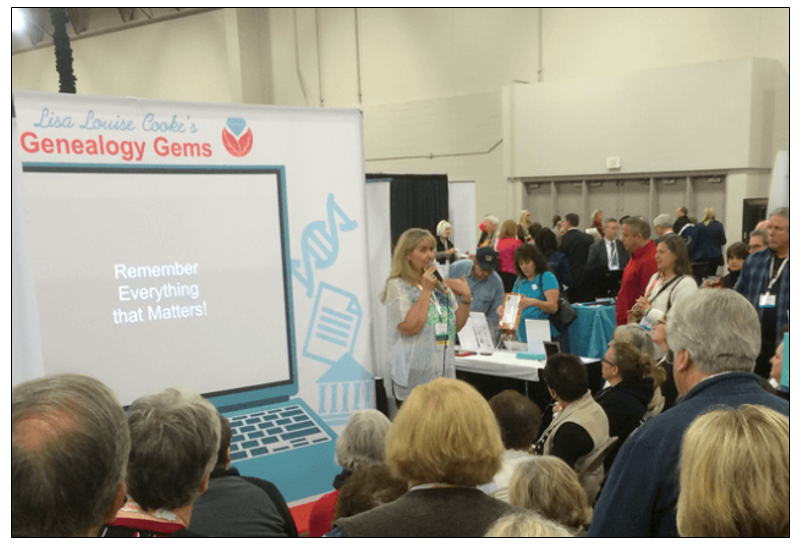Search the SSDI for Your Family History
Are you tracing the family history of someone who lived in the U.S. during the 20th century? Check out a wonderful free database in the United States called the Social  Security Death Index, or the SSDI. Keep reading for 5 FREE online sources for the SSDI, 7 tips for searching the SSDI and what you can do with SSDI info.
Security Death Index, or the SSDI. Keep reading for 5 FREE online sources for the SSDI, 7 tips for searching the SSDI and what you can do with SSDI info.
In 1935 the Social Security Act was signed into law by President Franklin Roosevelt, and consequently more than thirty million Americans were registered by 1937. Today, the Death Master File from the Social Security Administration contains over 89 million records of deaths that have been reported to the Social Security Administration and they are publicly available online.
Most of the information included in the index dates from 1962, although some data is from as early as 1937. This is because the Social Security Administration began to use a computer database for processing requests for benefits in 1962. Many of the earlier records back to 1937 have not been added.
The SSDI does not have a death record for everyone; and occasionally you may find an error here and there if something was reported inaccurately, but overall it’s a terrific resource! It’s especially great for many people who were missed in the 1890 census or whose birth predated vital records registration in their home state. Remember they just needed to live past 1937 and to have worked to have been included. So they could have been born sometime in the later 1800s.
5 FREE Online Sources for the SSDI
Several genealogy websites provide free access to the SSDI, including (click to go right to the SSDI at these sites):
On the Search page, enter your relative’s name and other details you’re asked for. Hopefully you will get back results that includes your relative!
7 Tips for Searching the SSDI
If your relative doesn’t show up in the SSDI, even though you know they worked after 1937 and you know they have passed away, try these search tips:
1. Does the website you are using to search the SSDI have the most current version available? Look in the database description on the site to see how recently it was updated. Try searching at other sites.
2. Make sure that you tried alternate spellings for their name. You never know how it might have been typed into the SSDI database.
3. Many SSDI indexes allow you to use wildcards in your search. So for example you could type in “Pat*” which would pull up any name that has the first three letters as PAT such as Patrick, Patricia, etc.
4. Try using less information in your search. Maybe one of the details you’ve been including is different in the SSDI database. For example it may ask for state and you enter California because that’s where grandpa died, when they were looking for Oklahoma because that’s where he first applied for his social security card. By leaving off the state you’ll get more results. Or leave off the birth year because even though you know it’s correct, it may have been recorded incorrectly in the SSDI and therefore it’s preventing your ancestor from appearing in the search results.
5. Leave out the middle name because middle names are not usually included in the database. However, if you don’t have luck with their given name, try searching the middle name as their given name. In the case of my grandfather his given name was Robert but he went by the initial J.B. But in the SSDI his name is spelled out as JAY BEE!
6. Remember that married women will most likely be listed under their married surname, not their maiden name. But if you strike out with the married name, go ahead and give the maiden a try. She may have applied for her card when single, and never bothered to update the Administration’s records. Or if she was married more than once, check all her married names for the same reason.
7. Don’t include the zip code if there is a search field for it because zip codes did not appear in earlier records.
While most folks will appear in the SSDI, there are those who just won’t. But knowing where information is not located can be as important down the road in your research as knowing where it IS located, so I recommend making a note in your database that you did search the SSDI with no result. This will save you from duplicating the effort down the road because you forgot that you looked there.
What You Can Do with SSDI Information
Now, here comes the most exciting part of the SSDI: what you can do with that information. First, it usually includes a death date (at least the month and year) and sometimes a state and last known residence. Use this information to look for death records, obituaries, cemetery and funeral records. And use that Social Security Number to order a copy of your relative’s application for that number: the SS-5. Click here to read more about the SS-5 and how to order it.
Up next, read:
Get Started: How to Find Your Family History for Free
7 Great Ways to Use Your iPad for Family History
Philippines Genealogy Resources Now Online
 FamilySearch is creating an enormous–and still growing–collection of free online genealogy records for the Philippines.
FamilySearch is creating an enormous–and still growing–collection of free online genealogy records for the Philippines.
In recent weeks, I’ve noticed a lot of new genealogy records for the Philippines going online at FamilySearch. These indexed and/or digitized records include court records, local and national civil registrations, births and baptisms, marriages and parish records. Catholic church records are especially important, as the country is about 90% Catholic.
Highlights from their online Philippines genealogy collections include:
- Philippines Civil Registration (local), 1888-1984, over 4 million browsable records
- Philippines, Births and Baptisms, 1642-1994, with over 300,000 records
- Philippines, Marriages, 1723-1957, with over 800,000 indexed records
- Philippines, Deaths and Burials, 1726-1957, with over 5 million records
Resources:
 FamilySearch has a free Research Outline for the Philippines. If you’re new to family history, consider listening to our free Family History Made Easy podcast. This step-by-step series takes you through the basics of genealogy research from the beginning: listen to every episode in sequence or just choose the ones you need!
FamilySearch has a free Research Outline for the Philippines. If you’re new to family history, consider listening to our free Family History Made Easy podcast. This step-by-step series takes you through the basics of genealogy research from the beginning: listen to every episode in sequence or just choose the ones you need!
We Dig These Gems! New Genealogy Records Online
 Here’s this week’s roundup of new genealogy records online. Highlights: Canadian marriages, German emigrants, Philippines civil registrations, Russian and Ukrainian church records and Michigan marriages.
Here’s this week’s roundup of new genealogy records online. Highlights: Canadian marriages, German emigrants, Philippines civil registrations, Russian and Ukrainian church records and Michigan marriages.
CANADA – MARRIAGES. A new collection of district marriage register images for Ontario, Canada (1801-1858) is now free to browse at FamilySearch.org. Most entries are for the 1830s-1850s.
GERMANY – EMIGRANTS. The (former) Grand Duchy of Oldenburg Emigrants database just passed the 100.000 person mark. According to a note from the site host, “The database contains beside the emigrant itself also the family members we could trace in Germany or the Country to which he migrated.” Learn more at this blog post from the Oldenburgische Gesellschaft für Familienkunde. Click here to hear online German records expert Jim Beidler talk about new German records online.
PHILIPPINES – CIVIL REGISTRATIONS. FamilySearch.org has added 1.7 million+ browsable records to an existing collection of Philippines national civil registration records (1945-1984). These are described as “marriage and death certificates from various localities,” excluding Manila, for which there is a separate database.
RUSSIA – CHURCH. Nearly half a million browsable records have been added to a free FamilySearch.org collection of church books for Tatarstan, Russia (1721-1939). These are described as “images of births and baptisms, marriages, deaths and burials performed by priests of the Russian Orthodox Church in the republic of Tatarstan.” More records are being added as they are available.
UKRAINE – CHURCH. Another 205,000 browsable records have been added to a free FamilySearch.org collection of church book duplicates for Kyiv, Ukraine (1734-1920).
U.S. – MICHIGAN – MARRIAGES. FamilySearch.org has added more than 60,000 indexed names to its collection of Michigan county marriage records (1820-1940) and another 2000+ names to its collection of Michigan church marriage records (1865-1931).
 Thanks for sharing this post about new genealogy records online with your genealogy buddies on your favorite social media sites! We love spreading good news.
Thanks for sharing this post about new genealogy records online with your genealogy buddies on your favorite social media sites! We love spreading good news.
LaVar Burton to be Keynote Speaker at RootsTech 2017
RootsTech 2017 is already wowing us with their recent announcement of Friday’s keynote speaker, LaVar Burton. Not just known for favorites like Reading Rainbow and Star Trek: The Next Generation, LaVar has been known by millions for his role as Kunta Kinte the 1977, ABC mini series, Roots.

I can hardly wait until Friday, February 10th, 2017 when LaVar Burton is introduced on stage as a keynote speaker at RootsTech! One of my childhood favorites, I grew up listening to him share his love of reading in Reading Rainbow and teaching his best friend, Data, how to be more ‘human’ in the popular TV show, Star Trek: The Next Generation.
Mr. Burton is excited about the opportunity to speak at RootsTech where he plans to share personal stories about Roots, Star Trek, and his Reading Rainbow foundation. He also plans on sharing stories of his mom and her commanding influence on him. He says,
“The story of Roots traces a family’s journey from Africa to America and back. At RootsTech, I’ll share some of my own journey of family, storytelling and the influence of African culture on my American Experience.”
RootsTech Keynote Speakers and More
L aVar Burton is the first RootsTech Keynote Speaker to be announced for 2017. More speakers will be announced over the coming weeks.
aVar Burton is the first RootsTech Keynote Speaker to be announced for 2017. More speakers will be announced over the coming weeks.
If you haven’t heard, registration has already started for the RootsTech genealogy conference in Salt Lake City. Visit www.rootstech.org to register or learn more.
Be sure to come by and visit the entire Genealogy Gems team in the Expo Hall. We have some very special things planned for the event. Stay tuned!
